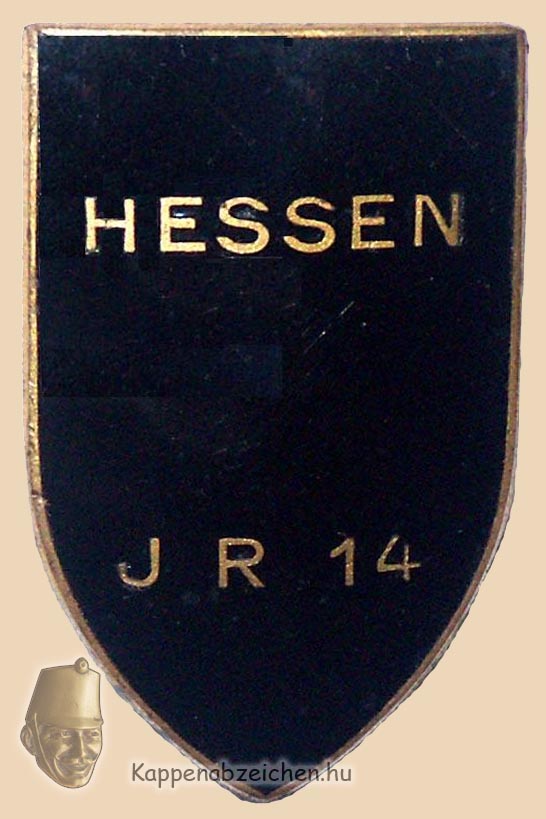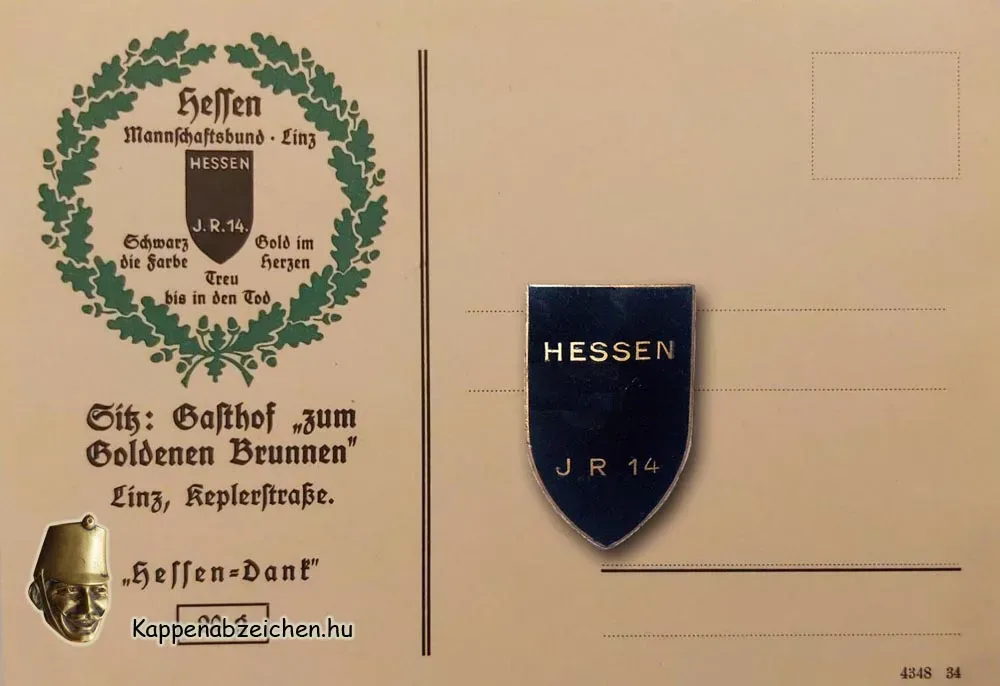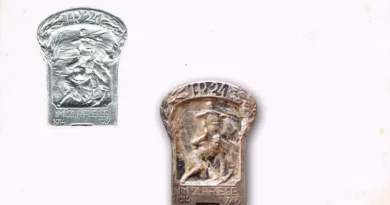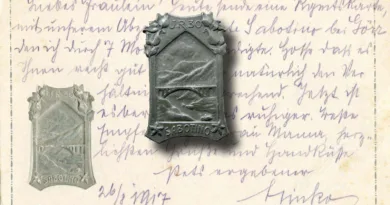IR 14
Cap badges were still used by veterans of many regiments after the war. Veteran associations have had a long tradition, especially in Austria. All the better-known infantry regiments, the house regiments of the cities, had a comrade association that held regular meetings. In some cases, this tradition continues to this day, although only the descendants of former soldiers participate in it.
This tradition is also interesting from the point of view of cap badges. The former badges were remanufactured in the decades following the war. These newer releases mostly differ from the original badges in minor details. For example, pieces issued for jubilee gatherings included the year of the anniversary (27th regiment). Other times, however, the difference is minimal. For example, you can see that the pin on the reverse is not the same as on the war pieces (Regiment 47). A separate question related to this issue is the nature of the mini versions of the regimental flags. These little flags are usually equipped with a plain pin or are buttonhole badges. This mode of fastening obviously does not suit the soldier moving in the field: the insignia falls off immediately. Therefore, I think that the small-sized flags are more likely to be issued by associations. This is typical for Hungarian regiments in particular.

The insignia shown in the post is the original wartime Kappenabzeichen of the 14th regiment, but a completely similar mini version was also made, which may have belonged to the comrades’ association. I’m not sure because the pin is hooked and many other badges had smaller versions during the war. The background image is a postcard that, according to the inscription, must be post-war. The headquarters of the IR 14 association was in Linz in a pub listed on the card, the Golden Dwell. If there was a headquarters, there may have been a regimental insignia of a later edition too.




